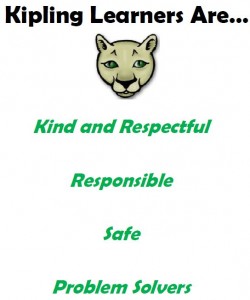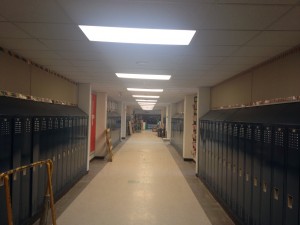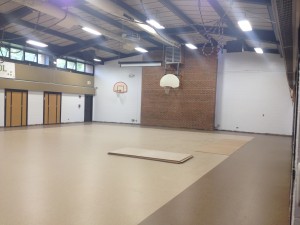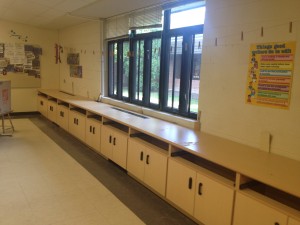By this point some of you may be wondering what your child is talking about when they come home talking about Paw Prints and winning tickets and getting to keep a cougar in their classroom. What you have been hearing about is PAW PRIDE. Kipling’s new Positive Behavior Support System also known as PBS.
Positive Behavior Support is a research based approach to not only improving student behavior but also teaching prosocial skills. It is a behavior program for students that focuses on reinforcing the behaviors we would like to see rather than punishment. The main component of this system is that it is proactive. A school that adopts a PBS approach believes in teaching behaviors and using positive reinforcement often to increase the frequency of those behaviors across the entire school. Kipling School believes in the Positive Behavior Support approach!
PAW PRIDE is our PBS system created by Kipling staff that seeks to reinforce positive behaviors. There are four components of PAW PRIDE. We say that Kipling learners are Kind and Respectful, Responsible, Safe, and Problem Solvers. If you are around our school you have probably seen these posters up in our hallways and in every classroom.
The four components above demonstrate what we like to see in our students. Whenever a teacher or any other staff member sees a student being an exemplary example of any of these behaviors they can award the students a PAW PRINT. The PAW PRINT is a ticket that the student can deposit into a bin in his/her classroom. At the end of the week on Friday each teacher will forward the name of one winner to me and at the end of the day I will announce the winner for each classroom. They will come to the office where they will receive a certificate and a prize. The tickets in the classroom bin that did not win will be kept and entered into a drawing for other prizes at an end of the semester assembly.
Also, as I monitor classrooms throughout the week I will award the “Kipling Cougar” to the classroom that I have seen be the best overall example of all of these behaviors.
This system has been implemented this week in several phases. First, teachers have been discussing it in their classrooms and involving students in setting classroom guidelines based on these 4 items. On Wednesday we had an all school assembly and discussed each one. I also went to each Kindergarten class to talk to them about the program. Students can get PAW PRINTS from any staff member in the building. Our first drawing and awarding of the Kipling Cougar will be next Friday.
How You Can Be Involved at Home
It is important that our students not only think of these as school behaviors but everywhere behaviors. You can discuss being kind and respectful, responsible, safe, and a problem solver at home to help support the home-school connection. Feel free to email me if you would like a poster to print out at home.



















